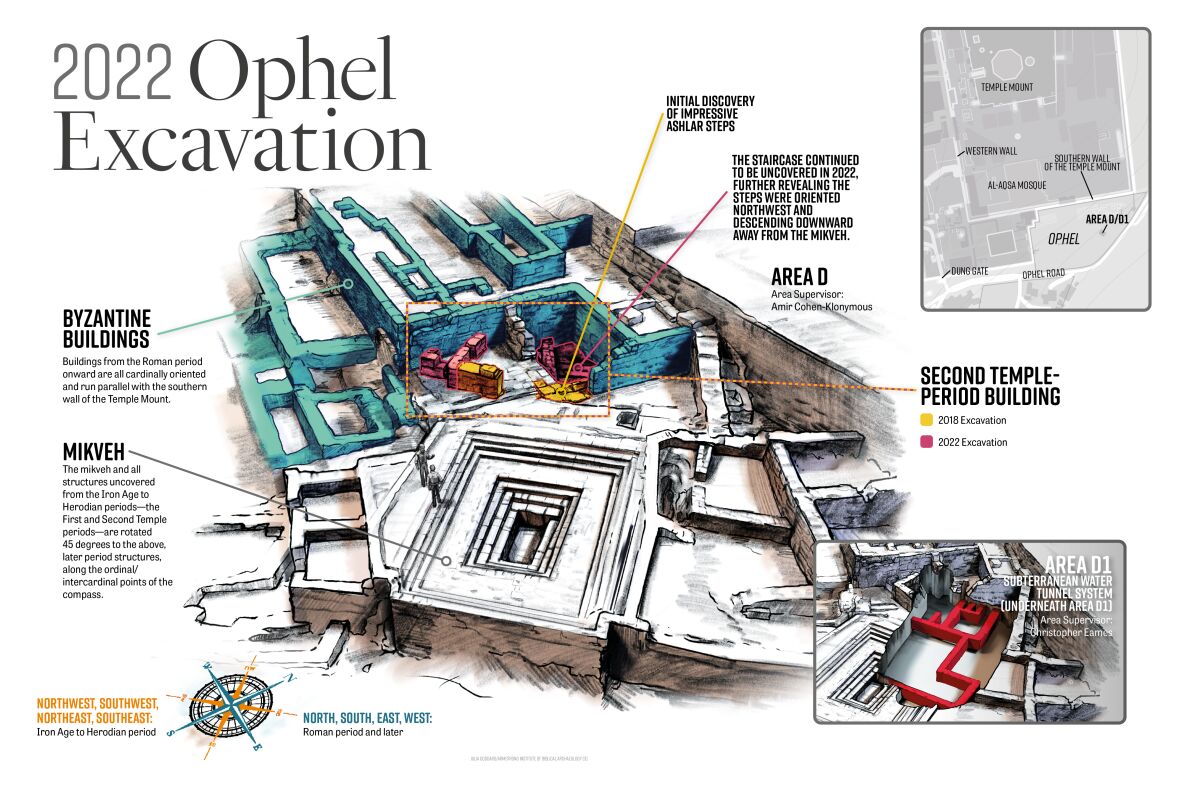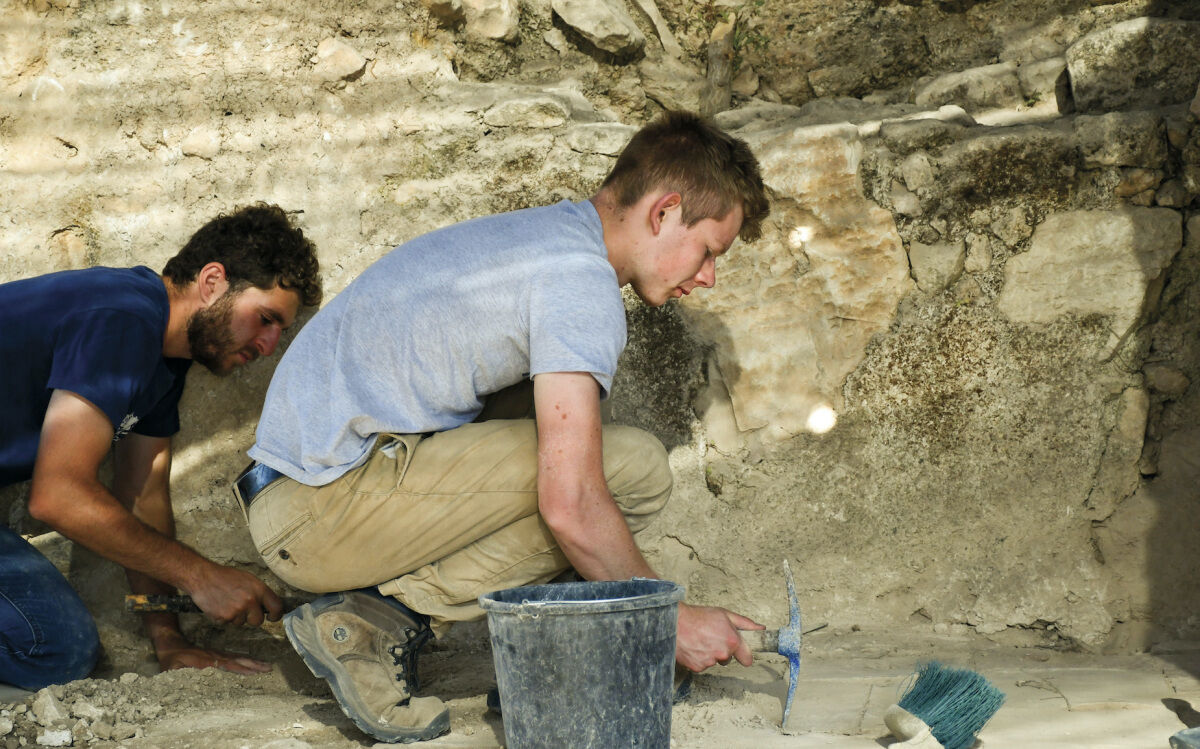The 2022 phase of the Ophel excavation significantly expanded our understanding of the area. This was our first excavation without Dr. Eilat Mazar. While we missed Eilat greatly, we were privileged to work under the direction of one of her friends and colleagues, Hebrew University archaeologist Prof. Uzi Leibner. Professor Leibner is the head of the Institute of Archaeology at Hebrew University and specializes in the Greek, Roman and Byzantine periods.
Two areas: The dig was divided into two main areas. Archaeologist Amir Cohen-Klonymous was area supervisor over the upper area, containing the Byzantine structure and the Early Roman remains beneath, with the beautiful Herodian steps. The other area supervisor was our very own Christopher Eames, who oversaw the excavation of the subterranean tunnel network made up of finely carved ashlar stones, most of which are situated below the Byzantine and Herodian structures and connected to the Second Temple-period structure above.

Mysterious mikveh: One of the most visible and iconic architectural features on the east side of the Ophel is the large four-way, stepped rectangular mikveh. This Second Temple-period feature was discovered during the 1980s by Meir Ben-Dov. It is evident that the Second Temple-period structure that is beginning to emerge orients toward this ritual pool. The network of tunnels connects directly to a drainage port at the base of the mikveh.
The mikveh remains somewhat of a mystery. The pool is not a standard single-direction ritual mikveh. Rather, it has steps on all four sides and more closely resembles the design of the (much larger) Pool of Siloam, south of the City of David. (If you’re interested in learning more about this bath, read chapter i.7 of Dr. Eilat Mazar’s The Ophel Excavations to the South of the Temple Mount, 2009–2013, Final Reports Vol. II, by Asher Grossberg.)

Subterranean structure: The tunnels are another enigma that we’re trying to understand. We were already generally aware of the extent of these tunnels, as they have been investigated and drawn by the site architect. But until this excavation, they were largely filled with “fill” (earth), barely allowing passage, even on hands and knees. There is some beautiful architecture in these tunnels.
One thing we do know is that the subterranean structure was built from the ground up and supports the upper Second Temple-period building that stands above it. We know this subterranean network did not serve merely as the drainage system for the large mikveh and associated building. We also learned that there were several phases to the historic use of these tunnels.

In order to retrieve the potentially rich finds that washed into this subterranean system, we both dry-sifted and wet-sifted all of the material removed from the tunnels.
Although we do not yet have a complete or detailed understanding of this Second Temple-period structure, we uncovered much more evidence revealing its monumental nature, including more large and impressive steps and walls.
The evidence suggests that the building, with its fine and grand architectural features (some of the finest Herodian architecture on this side of the Ophel), was directly related, in some form or other, to the function and use of the temple. One of the strongest proofs of this is the discovery in the area of numerous (more than a dozen so far) second temple purification baths.
Rare discovery: While we discovered many coins during the excavation, the most notable was a 2,000-year-old silver coin. This is only the third such coin discovered in the city. The coin (among the rest of the Revolt hoard) was found in a grand first-century Herodian and early Roman-period public structure on the eastern edge of the Ophel, surrounded by mikvaot (ritual purification baths) that would have played an important role in the function of the temple service. Together with the revolt coins were remains of the final destruction of Jerusalem in 70 c.e.—including collapsed walls, strewn boulders and ash.
We concluded the excavation on August 11. Remarkably, this dig ended much the same way our 2018 dig ended: the base of a monumental Second Temple-period structure further exposed; a trove of incredible finds; some questions answered; and more fascinating questions yet to be answered.
